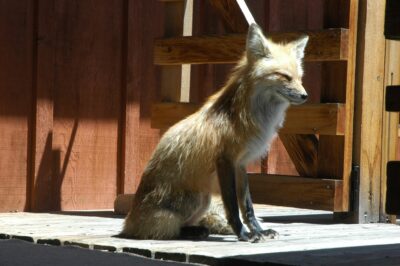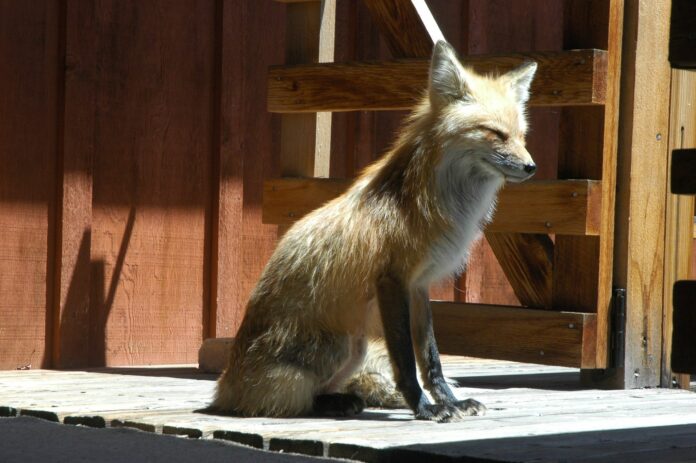BY HARRY WEEKES

This year, my son joined the bantams. In hockey, this means he has officially entered the world of full-contact checking, and all that that entails for a 13-year-old boy. Mostly, this is talking about “blowing kids up,” “laying hippies” on everyone he can, and otherwise looking to “wreck people.” The reality is a lot more tentative, and involves constantly looking over his shoulder as he glides to a near standstill in the corner. In my attempts to get him not to focus on hitting, I show him clips of NHL games and ask, “What don’t you see?” What you don’t see is players slowing down, giving up their positional advantage on the puck, and overly concerned about getting hit.
Why this is the jumping-off point for this piece is to illustrate just how difficult it is to see something that is not there and how hard it is to learn from these examples. A case in point came up when I asked Simon, “Are there foxes in Indian Creek?” His answer was telling, “Maybe once in a while, but I would say no.”
Ten years ago, when Simon was a toddler, there were at least three obvious fox dens on our drive out Indian Creek, and about the only reason you did not see a fox was because you forgot to look. There was a beautiful russet female coiled onto the lip of her burrow, there were kits born in the culvert at the turn past Mizer Gulch, and there was a black-coated fox that prowled the hills of our small canyon.
I have seen fewer than five foxes in five years (and this is positive exaggeration—I can actually remember none) and, at least in Simon’s memory, foxes don’t live in Indian Creek.
I could almost say the same thing about rabbits. Three or four years ago, our record number driving to town was somewhere in the forties. That was in that particularly “rabbity” year people may remember.
Now, I know of one, mostly by its tracks, although I have caught a glimpse of it twice.
Biologists talk about shifting baselines—the gradual resetting of expectations based on what we experience. My oldest daughter, Georgia, grew up in a world of foxes and rabbits. They played into our daily stories, and showed up everywhere, from the surrounding hills, to the driveway, to the baby rabbit in the pantry. I am not sure Simon has seen a fox in Indian Creek, and rabbits are hardly part of his lore.
What does this mean and what impact will this have? Beyond the types of stories I tell my kids, the simplest answer is, “Who knows?” And this always kind of freaks me out. At the end of the day, we don’t know why the foxes are gone, why the rabbit populations have waned, or what either of these will mean in the short- or long-term narrative of our area.
What I do know is that over a really short amount of time, “no foxes” became normal.
The natural world is nothing if not an ebb and flow of things—cycles, swirls and eddies of creatures great and small. I am increasingly fond of the annual hellos and goodbyes that mark the seasons, and there is something obvious and tangible about who is ‘there.’
Lately, I’ve been paying attention to what’s not there, which is why I turned to the fox. Now I’m wondering, “What else am I missing?” I cannot fully answer this, which somehow makes the answer seem more important to me.

